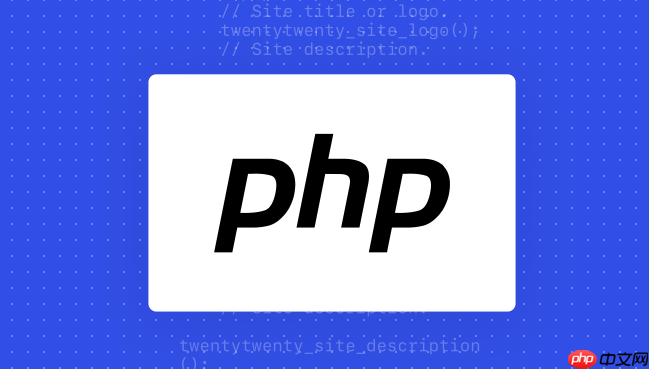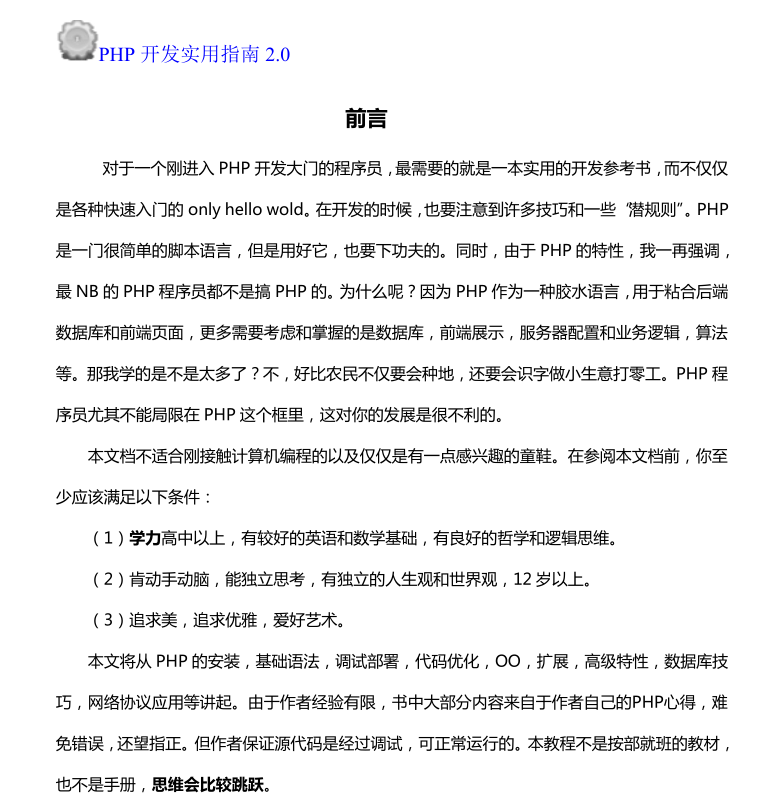php调用node.js脚本有三种主要方法:1.exec()、shell_exec()、system()函数可直接执行命令,但需注意安全性和异步处理;2.使用消息队列(如rabbitmq、redis)实现解耦和异步任务处理,需配置持久化与确认机制;3.通过http api调用node.js构建的服务器接口,具备灵活性但需处理url编码、https等细节。数据传递方面,json结构可通过json_encode()与json.parse()处理。错误处理上,各方式均需捕获异常、检查返回码或状态,并记录日志。性能优化包括减少传输量、使用高效数据格式、异步操作、连接池及监控工具的应用。最终应根据任务复杂度和场景选择合适方案,确保系统安全、稳定与高效运行。

PHP调用Node.js脚本,其实就是让PHP来执行一些Node.js写的任务。这事儿能干,而且挺实用,比如有些高并发或者实时性要求高的功能,Node.js处理起来更溜。

解决方案

要实现PHP调用Node.js,主要有三种方法,咱们一个个来说:
立即学习“PHP免费学习笔记(深入)”;

exec()、shell_exec()、system() 函数:简单粗暴,直接执行命令
这是最直接的方法。PHP提供了几个函数,可以直接在服务器上执行系统命令,Node.js脚本也是命令嘛,直接调用就行了。
exec(): 执行一个外部程序。shell_exec(): 通过 shell 执行命令并将完整的输出以字符串的方式返回。system(): 执行外部程序,并且显示输出。举个例子,假设你有个Node.js脚本叫my_script.js,放在/var/www/node_scripts/目录下:
<?php $command = 'node /var/www/node_scripts/my_script.js ' . escapeshellarg($_POST['data']); // 假设要传递POST数据 $output = shell_exec($command); echo $output; ?>
注意点:
安全性! escapeshellarg() 函数非常重要,它可以帮你转义参数,防止命令注入。千万别直接把用户输入拼到命令里,不然等着被黑吧。
权限问题。 PHP运行的用户(比如www-data)要有执行Node.js脚本的权限。
输出处理。 shell_exec() 会返回脚本的输出,你需要根据实际情况处理这个输出。
异步执行。 默认情况下,PHP会等待Node.js脚本执行完毕。如果Node.js脚本执行时间比较长,会阻塞PHP的请求。可以考虑使用 & 符号将命令放到后台执行,让PHP不用等待:
$command = 'node /var/www/node_scripts/my_script.js ' . escapeshellarg($_POST['data']) . ' > /dev/null 2>&1 &'; shell_exec($command); // 不等待,直接返回
这里的 > /dev/null 2>&1 是把输出和错误都丢掉,如果你需要记录日志,可以把它们重定向到日志文件。
使用消息队列(如RabbitMQ、Redis):解耦,异步,更健壮
直接执行命令虽然简单,但耦合性太高,PHP和Node.js脚本之间是强依赖关系。如果Node.js脚本挂了,或者执行时间太长,都会影响PHP的性能。
使用消息队列可以解耦它们。PHP把任务放到消息队列里,Node.js脚本从消息队列里取任务执行,这样PHP就不用等待Node.js脚本执行完毕了。
安装消息队列。 以RabbitMQ为例,先安装RabbitMQ:
sudo apt-get update sudo apt-get install rabbitmq-server
安装PHP和Node.js的RabbitMQ客户端。
PHP: composer require php-amqplib/php-amqplib
Node.js: npm install amqplib
PHP代码(生产者):
<?php
require_once __DIR__ . '/vendor/autoload.php';
use PhpAmqpLib\Connection\AMQPStreamConnection;
use PhpAmqpLib\Message\AMQPMessage;
$connection = new AMQPStreamConnection('localhost', 5672, 'guest', 'guest');
$channel = $connection->channel();
$channel->queue_declare('task_queue', false, true, false, false); // 持久化队列
$data = $_POST['data'];
$msg = new AMQPMessage(
$data,
['delivery_mode' => AMQPMessage::DELIVERY_MODE_PERSISTENT] // 消息持久化
);
$channel->basic_publish($msg, '', 'task_queue');
echo " [x] Sent " . $data . "\n";
$channel->close();
$connection->close();
?>Node.js代码(消费者):
#!/usr/bin/env node
var amqp = require('amqplib/callback_api');
amqp.connect('amqp://localhost', function(error0, connection) {
if (error0) {
throw error0;
}
connection.createChannel(function(error1, channel) {
if (error1) {
throw error1;
}
var queue = 'task_queue';
channel.assertQueue(queue, {
durable: true // 持久化队列
});
channel.prefetch(1); // 每次只处理一个消息
console.log(" [*] Waiting for messages in %s. To exit press CTRL+C", queue);
channel.consume(queue, function(msg) {
var secs = msg.content.toString().split('.').length - 1;
console.log(" [x] Received %s", msg.content.toString());
setTimeout(function() {
console.log(" [x] Done");
channel.ack(msg); // 确认消息已处理
}, secs * 1000);
}, {
noAck: false // 手动确认消息
});
});
});注意点:
使用HTTP API:灵活,通用,但稍复杂

对于一个刚进入PHP 开发大门的程序员,最需要的就是一本实用的开发参考书,而不仅仅是各种快速入门的only hello wold。在开发的时候,也要注意到许多技巧和一些“潜规则”。PHP是一门很简单的脚本语言,但是用好它,也要下功夫的。同时,由于PHP 的特性,我一再强调,最NB 的PHP 程序员都不是搞PHP 的。为什么呢?因为PHP 作为一种胶水语言,用于粘合后端 数据库和前端页面,更多需
 397
397

你可以用Node.js写一个HTTP服务器,PHP通过HTTP请求调用这个服务器。这种方式更灵活,也更通用,因为HTTP是通用的协议,可以用在不同的语言和平台之间。
Node.js代码(HTTP服务器):
const http = require('http');
const url = require('url');
const hostname = '127.0.0.1';
const port = 3000;
const server = http.createServer((req, res) => {
const queryObject = url.parse(req.url,true).query;
const data = queryObject.data;
// 这里处理你的逻辑,比如调用其他的Node.js模块
const result = `You sent: ${data}`;
res.statusCode = 200;
res.setHeader('Content-Type', 'text/plain');
res.end(result);
});
server.listen(port, hostname, () => {
console.log(`Server running at http://${hostname}:${port}/`);
});PHP代码(HTTP客户端):
<?php $data = $_POST['data']; $url = 'http://127.0.0.1:3000/?data=' . urlencode($data); $response = file_get_contents($url); echo $response; ?>
注意点:
urlencode() 函数对参数进行URL编码,防止特殊字符导致问题。传递JSON数据,三种方法都可以,但处理方式略有不同。
exec()、shell_exec()、system():
json_encode() 将数据编码成JSON字符串,然后通过 escapeshellarg() 转义后传递给Node.js脚本。JSON.parse() 解析成JavaScript对象。<?php $data = ['name' => 'John', 'age' => 30]; $json_data = json_encode($data); $command = 'node /var/www/node_scripts/my_script.js ' . escapeshellarg($json_data); $output = shell_exec($command); echo $output; ?>
// my_script.js const data = JSON.parse(process.argv[2]); console.log(data.name); // 输出 "John"
消息队列:
json_encode() 将数据编码成JSON字符串,然后作为消息发送到消息队列。JSON.parse() 解析成JavaScript对象。(代码示例参考前面的消息队列部分,只需要把 $data 替换成 json_encode($data) 即可)
HTTP API:
json_encode() 将数据编码成JSON字符串,然后通过POST请求发送给Node.js服务器,设置 Content-Type 为 application/json。JSON.parse() 解析成JavaScript对象。<?php
$data = ['name' => 'John', 'age' => 30];
$json_data = json_encode($data);
$url = 'http://127.0.0.1:3000/';
$options = array(
'http' => array(
'method' => 'POST',
'header' => 'Content-type: application/json',
'content' => $json_data
)
);
$context = stream_context_create($options);
$response = file_get_contents($url, false, $context);
echo $response;
?>// Node.js服务器
const http = require('http');
const hostname = '127.0.0.1';
const port = 3000;
const server = http.createServer((req, res) => {
if (req.method === 'POST') {
let body = '';
req.on('data', chunk => {
body += chunk.toString(); // 将Buffer转换为字符串
});
req.on('end', () => {
try {
const data = JSON.parse(body);
console.log(data.name); // 输出 "John"
res.statusCode = 200;
res.setHeader('Content-Type', 'text/plain');
res.end('Data received');
} catch (error) {
res.statusCode = 400;
res.setHeader('Content-Type', 'text/plain');
res.end('Invalid JSON');
}
});
} else {
res.statusCode = 405;
res.setHeader('Content-Type', 'text/plain');
res.end('Method Not Allowed');
}
});
server.listen(port, hostname, () => {
console.log(`Server running at http://${hostname}:${port}/`);
});错误处理是关键,不然出了问题都不知道。
exec()、shell_exec()、system():
exec() 和 system() 会返回命令的退出码。0表示成功,非0表示失败。shell_exec() 返回的是命令的输出,如果命令执行失败,可能返回空字符串或者错误信息。<?php
$command = 'node /var/www/node_scripts/my_script.js 2>&1'; // 将标准错误输出重定向到标准输出
$output = shell_exec($command);
$return_code = 0; // 初始化返回值
exec($command, $output_array, $return_code);
if ($return_code !== 0) {
// 命令执行失败
error_log("Node.js script failed with code: " . $return_code . ", output: " . $output);
// 或者抛出异常
throw new Exception("Node.js script failed: " . $output);
}
echo $output;
?>消息队列:
<?php
// PHP (Producer)
try {
$connection = new AMQPStreamConnection('localhost', 5672, 'guest', 'guest');
$channel = $connection->channel();
$channel->queue_declare('task_queue', false, true, false, false);
$data = $_POST['data'];
$msg = new AMQPMessage(
$data,
['delivery_mode' => AMQPMessage::DELIVERY_MODE_PERSISTENT]
);
$channel->basic_publish($msg, '', 'task_queue');
echo " [x] Sent " . $data . "\n";
$channel->close();
$connection->close();
} catch (Exception $e) {
error_log("Failed to send message: " . $e->getMessage());
// Handle the exception, e.g., display an error message to the user
}
?>// Node.js (Consumer)
var amqp = require('amqplib/callback_api');
amqp.connect('amqp://localhost', function(error0, connection) {
if (error0) {
console.error("Failed to connect to RabbitMQ: " + error0.message);
throw error0;
}
connection.createChannel(function(error1, channel) {
if (error1) {
console.error("Failed to create channel: " + error1.message);
throw error1;
}
var queue = 'task_queue';
channel.assertQueue(queue, {
durable: true
});
channel.prefetch(1);
console.log(" [*] Waiting for messages in %s. To exit press CTRL+C", queue);
channel.consume(queue, function(msg) {
try {
var secs = msg.content.toString().split('.').length - 1;
console.log(" [x] Received %s", msg.content.toString());
setTimeout(function() {
console.log(" [x] Done");
channel.ack(msg);
}, secs * 1000);
} catch (error) {
console.error("Error processing message: " + error.message);
channel.nack(msg, false, false); // Reject the message, don't requeue
}
}, {
noAck: false
});
});
connection.on("close", function() {
console.error("Connection to RabbitMQ closed.");
process.exit(1); // Exit the process to allow restart
});
});HTTP API:
<?php
$data = ['name' => 'John', 'age' => 30];
$json_data = json_encode($data);
$url = 'http://127.0.0.1:3000/';
$options = array(
'http' => array(
'method' => 'POST',
'header' => 'Content-type: application/json',
'content' => $json_data
)
);
$context = stream_context_create($options);
$response = @file_get_contents($url, false, $context); // 使用 @ 抑制警告
if ($response === FALSE) {
// HTTP请求失败
$error = error_get_last();
error_log("HTTP request failed: " . $error['message']);
// 或者抛出异常
throw new Exception("HTTP request failed: " . $error['message']);
}
// 检查HTTP状态码
$http_response_header = $http_response_header ?? []; // 确保变量已定义
$status_line = $http_response_header[0] ?? '';
preg_match('{HTTP\/\S*\s(\d+)}', $status_line, $match);
$status_code = $match[1] ?? 0;
if ($status_code != 200) {
error_log("HTTP request returned status code: " . $status_code . ", response: " . $response);
// 或者抛出异常
throw new Exception("HTTP request failed with status code: " . $status_code . ", response: " . $response);
}
echo $response;
?>// Node.js服务器
const http = require('http');
const hostname = '127.0.0.1';
const port = 3000;
const server = http.createServer((req, res) => {
if (req.method === 'POST') {
let body = '';
req.on('data', chunk => {
body += chunk.toString();
});
req.on('end', () => {
try {
const data = JSON.parse(body);
console.log(data.name);
res.statusCode = 200;
res.setHeader('Content-Type', 'text/plain');
res.end('Data received');
} catch (error) {
console.error("Error parsing JSON: " + error.message);
res.statusCode = 400;
res.setHeader('Content-Type', 'text/plain');
res.end('Invalid JSON');
}
});
} else {
res.statusCode = 405;
res.setHeader('Content-Type', 'text/plain');
res.end('Method Not Allowed');
}
});
server.listen(port, hostname, () => {
console.log(`Server running at http://${hostname}:${port}/`);
});性能优化是个持续的过程,没有银弹。
减少数据传输量:
使用更高效的数据格式:
优化Node.js脚本的性能:
使用连接池:
使用异步操作:
监控和分析:
选择合适的调用方式:
exec()、shell_exec()、system()。利用多核CPU:
cluster模块来利用多核CPU。总的来说,PHP调用Node.js脚本是一个强大的技术,可以让你结合两种语言的优势。选择合适的方法,注意安全性和错误处理,并不断优化性能,就能构建出高效、可靠的应用程序。
以上就是PHP如何调用Node.js脚本 调用Node.js的3种实用技巧的详细内容,更多请关注php中文网其它相关文章!

PHP怎么学习?PHP怎么入门?PHP在哪学?PHP怎么学才快?不用担心,这里为大家提供了PHP速学教程(入门到精通),有需要的小伙伴保存下载就能学习啦!

Copyright 2014-2025 https://www.php.cn/ All Rights Reserved | php.cn | 湘ICP备2023035733号